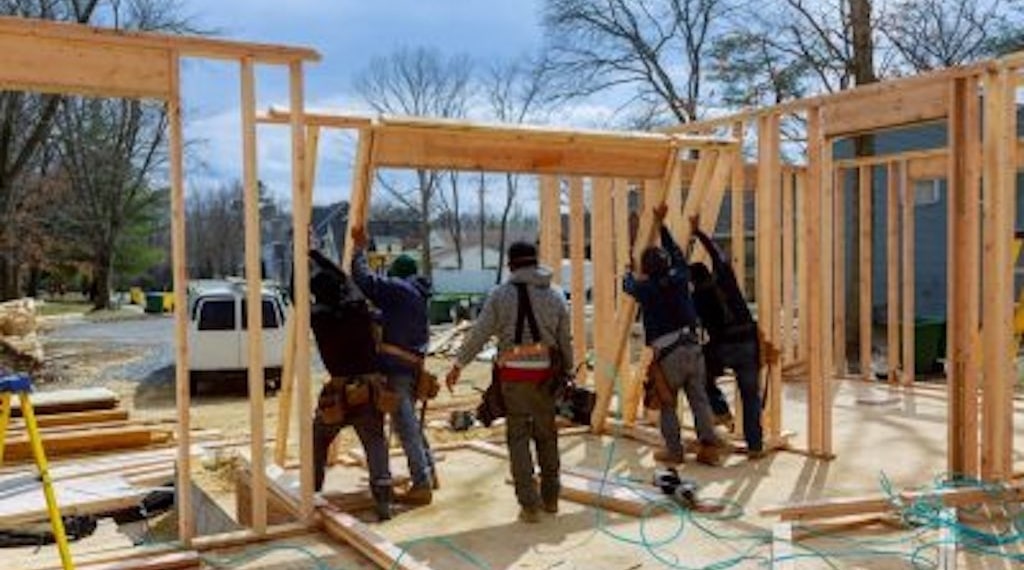Uptick in construction workers means more home building
After three months of mediocre gains, the U.S. unemployment situation brightened considerably in March. Total nonfarm payroll employment rose by 916,000 and pushed the unemployment rate down to 6%, according to the U.S. Labor Department. Sectors that were hit hardest by the pandemic led job growth last month, with jumps in leisure, hospitality, public and private education and construction – good signs for the housing industry.

The economy has recovered just over 62% of the jobs lost at the start of the recession and the Bureau of Labor Statistics estimates there are still 9.7 million unemployed persons – 4 million higher than at the beginning of Feb. 2020. Overall, there are approximately more than 4.2 million people who have been actively looking for work for more than six months.
However, March’s increase of nearly 1 million jobs contrasts dramatically with the job growth seen in February, when a mere 49,000 jobs were gained. The Mortgage Bankers Association expects this heightened pace to drop unemployment numbers to below 5% by the end of the year.
According to Odetta Kushi, First American’s deputy chief economist, COVID-19 was the great recession for the services industry, especially leisure & hospitality. Younger and lower-wage workers bore the brunt. This sector showed the strongest gains in March with 280,000 new jobs, and there’s likely more to come with wider vaccine distribution and businesses reopening.
“The prime-age labor force participation rate fell in the aftermath of the Great Recession and it took a decade to return to the pre-Great Recession average (2001-2007) of 83%,” Kushi said. “The COVID recession wiped out those gains, but with more vaccinations and businesses reopening, there is greater opportunity to draw workers off the sidelines.”
Despite increased rate of tech adoption, the mortgage industry still has room for continued development and processes. HousingWire sat down with Renata Sheyner, vice president of product at CreditXpert, to learn more about key technologies that lenders need to give more attention to.
Presented by: CreditXpert
For housing, March gained 110,000 jobs in construction – a positive sign in an industry struggling with supply constraints. There is a desperate lack of inventory in the housing market right now, which is driving up home prices at an unsustainably rapid pace, MBA’s senior vice president and chief economist Mike Fratantoni noted.
Total construction employment remains 182,000 below its February 2020 level. But Fratantoni is confident that with the job growth and bright outlook for the remainder of the year, housing demand will remain quite strong, even if mortgage rates increase above 3.5%.
READ ALSO: Social Housing – Financing and Investment Trends
“Although the job market is certainly recovering quickly, the stimulus payments and renter and homeowner relief that were part of the American Rescue Plan will provide support for struggling individuals who are unemployed or underemployed, including the 2.5 million homeowners currently in forbearance plans,” said Fratantoni.
Residential construction jobs, on the other hand, increased 3.9% from the pre-2020 recession peak in Feb. 2020. March signified the highest number of residential construction workers since 2008. But the prime-age labor force participation rate hardly budged and remains 1.6% below the pre-COVID rate. A smaller active workforce means less labor resources available for the production of goods and services, which could hinder the economic recovery.
The lack of available homes on the market is taking a toll on the marginal buyer who is feeling an affordability squeeze. In February, new home sales, existing home sales and pending home sales also saw month-over-month declines. But these numbers are coming down from a pandemic anomaly. Purchase loans are still topping year-over-year highs, however, the refi market is taking a beating from rising rates.
“We need more hammers at work to build more homes,” said Kushi.
Source: HousingWire




